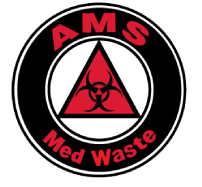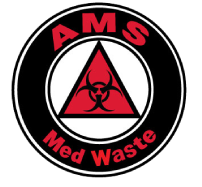Chemotherapy is a critical component in the treatment of cancer, however, it generates waste that carries considerable risks if not handled correctly. Medical facilities providing cancer treatments are faced with the challenge of managing this waste, which can go unnoticed with the primary focus on patient care. However, compliant disposal of chemotherapy waste is not just a regulatory requirement; it’s an essential aspect of maintaining a safe environment for staff, patients, and the wider community. This chemotherapy waste guide is to help everyone ensure safe disposal and stay informed on the legal requirements to follow.
The waste created during chemotherapy treatments is classified into two categories: trace and bulk. Both types present unique hazards and necessitate distinct disposal protocols. Gaining a clear understanding of these categories and their respective handling requirements is crucial for healthcare facilities aiming to stay compliant and safe while delivering life-saving treatments.
Chemotherapy Waste
Chemotherapy waste arises from any substance that has interacted with chemotherapeutic drugs, such as drug delivery devices, intravenous (IV) bags, gloves, gowns, or any other tools used during drug administration. This waste is generally categorized into two types: trace and bulk chemotherapy waste. Both types carry substantial risks, potentially leading to illness or even death in instances of unintended exposure. Therefore, their proper disposal is crucial for safety.
Trace Chemotherapy Waste
Trace chemotherapy waste refers to materials that have been in contact with or contain only residual amounts of chemotherapy agents; typically less than 3% of the original volume. For example, gloves and gowns used by healthcare professionals during drug administration fall under this category. The containers for trace chemotherapy waste are typically yellow and must be clearly labeled to avoid any confusion or mishandling.
This type of waste must legally go through medical waste incineration. This process exposes the waste to extremely high temperatures, effectively neutralizing the residual chemotherapy agents and reducing the risk of harm.
Bulk Chemotherapy Waste
Bulk chemotherapy waste refers to any item that contains more than 3% of the original amount of a chemotherapeutic agent. This includes waste that is contaminated with more than just residual amounts of chemotherapy drugs, such as certain drug dispensing devices or IV bags that still contain a significant portion of the chemotherapeutic agent.
The containers used for bulk chemotherapy waste are typically black, setting them apart from the yellow containers used for trace chemotherapy waste. In order to ensure safety, these containers must be clearly labeled.
Disposing of bulk chemotherapy waste involves more complexity due to the higher concentrations of chemotherapy drugs present. This type of waste requires specialized handling and disposal methods to prevent any risk to people or the environment. It’s crucial that this process is carried out by trained professionals following stringent guidelines to avoid any potential hazards.
The Importance of Proper Disposal
Proper disposal of both trace and bulk chemotherapy waste is crucial for the safety of healthcare workers, patients, and the community at large. Incorrect disposal can lead to accidental exposure to these harmful substances. Therefore, every healthcare facility must adhere to the established guidelines for chemotherapy waste disposal.
Your Partner in Safe Chemotherapy Waste Disposal
At AMS MedWaste, we specialize in the safe and effective disposal of both trace and bulk chemotherapy waste. Our team is well-versed in the complex regulations surrounding this type of waste, and we offer a range of container types and sizes to meet the specific needs of your healthcare facility. We provide our services across Northern Illinois and Southern Wisconsin, ensuring that your facility remains compliant and safe.
Don’t leave anything to chance when it comes to the critical task of chemotherapy waste disposal. Trust the experts at AMS MedWaste to handle this important responsibility. Our chemotherapy waste guide is only the beginning to understanding and implementing a strong waste disposal system. Contact us today to learn more about how we can assist your facility in maintaining a safe and compliant environment.






